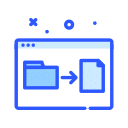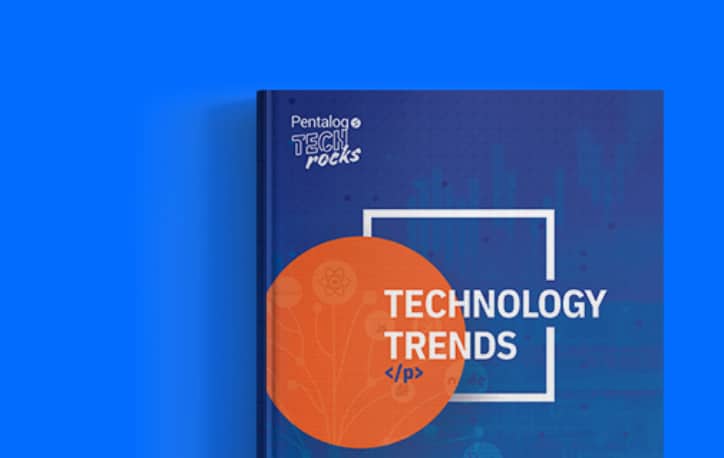Last Updated on March 12, 2025
A recent Gartner study predicts that more than 70% of recently implemented ERP initiatives will fail to fully meet their goals – and up to 25% of them will fail catastrophically.
Enterprise Resource Planning (ERP) systems promise streamlined operations, increased productivity, improved data security, compliance support, real-time insights, and better decision-making. But too often, companies implement a new ERP only to find it clogging workflows instead of optimizing them.
This can happen for several reasons, but poor data quality is one of the most common causes.
Inaccurate, inconsistent, or incomplete data can quickly turn your ERP investment into a costly mistake.
For a successful and seamless ERP implementation project, you must prioritize data cleaning.
Before you take the leap, make sure your data is clean, standardized, and ready for migration.
How Poor Data Quality Affects ERP Implementation
ERP systems rely on accurate, consistent, and complete data to function effectively. When bad data enters the system, it creates problems that ripple across the organization.
Here’s how bad data can derail your ERP implementation:
- Process Inefficiencies: Duplicate, outdated, or incomplete records can cause delays, errors, and miscommunications that disrupt business processes and make everyday operations more complex rather than streamlined.
- Faulty Reporting & Analytics: ERP systems rely on real-time data for decision-making. If the data is inaccurate, reports will be misleading and lead to poor strategic choices.
- Integration Failures: ERP platforms connect various departments. Dirty data can break these integrations and lead to missing information and system errors.
- Compliance Risks: Incorrect or inconsistent data can result in regulatory violations, especially in regulated industries like finance, healthcare, and government.
- Increased Costs & Delays: If data issues aren’t addressed upfront, businesses face expensive rework, extended implementation timelines, and additional training costs.
- User Adoption Challenges: If employees encounter inaccurate or unreliable data, their trust in the ERP system diminishes, which then reduce adoption rates and productivity.
How to Know If Your Data is Ready for ERP Implementation?
Before you migrate to a new ERP system, take a step back and assess your data. Ask yourself the following questions:
Does your database have blank or incomplete fields for products or customer records?
Are there old, outdated, or obsolete product codes in your systems that are no longer in use?
Did you ever enter a price quotation and maybe forgot to delete it?
Do you have critical data stored in Excel rather than in your legacy system?
Do you have multiple duplicate accounts of the same customer or supplier?
If you answered yes to any of these questions, your data isn’t ready for a new ERP.
Missing fields, outdated product codes, and duplicate records are all signs of poor data quality, which can disrupt ERP functionality and lead to inefficiencies instead of improvements.
How to Clean Data for ERP Implementation?
ERP vendors don’t handle data cleaning simply because it’s very expensive for them. Therefore, you can’t rely on your ERP software provider to clean and prepare your data for the new system – it’s your responsibility.
To ensure a smooth transition, data cleansing must be an integral part of your implementation plan from the start. After all, ensuring clean, precise, relevant and up-to-date records while minimizing the waste will not only help you minimize downtime at conversion but will also reduce the problems that you might face right after going-live.
Here’s a step-by-step approach to cleaning your data before migrating it to a new ERP system:
1. Assess Data Quality
Before you do anything, it’s important to evaluate the current state of your data to identify existing issues. The key aspects you must assess are:
- Accuracy: Does the data reflect real-world values?
- Completeness: Are there missing fields or records?
- Consistency: Are the same fields formatted uniformly across sources?
- Duplicates: Are there redundant records that need to be merged?
- Relevance: Is outdated or unnecessary data inflating your database?
To assess data quality:
- Conduct a data audit to identify errors, inconsistencies, and outdated records.
- Use data profiling tools to analyze missing values, duplicate records, and format variations.
- Categorize data issues based on severity and business impact.
2. Standardize Data Formats
Inconsistent formats can cause issues during data migration. Standardizing data beforehand can simplify the process by ensuring uniformity across fields. It includes:
- Converting dates to a single format (e.g., YYYY-MM-DD)
- Ensuring phone numbers and addresses follow a consistent structure.
- Standardizing naming conventions for customers, vendors, and products.
Define consistent naming conventions, units of measurements, and date formats across all data sources to ensure uniformity names, addresses, product codes, and financial records. You can also implement automated standardization rules to prevent errors from recurring.
3. Remove Duplicates & Inconsistencies
Duplicate or incorrect records lead to inefficiencies in ERP workflows. To clean them up:
- Use data matching tools to identify exact matches as well as near-duplicates.
- Merge redundant entries while retaining critical information using deduplication tools.
- Identify inconsistent values (e.g., different spelling of the same customer name) and resolve them.
- Establish unique identifier for records to prevent duplication in future.
4. Fill in Missing Data
Incomplete records can hinder ERP functionality. Therefore, you must identify critical missing fields (e.g., customer contact information, invoice amounts) and address them by:
- Using automated data enrichment tools to pull in missing details.
- Cross-referencing internal and external data sources.
- Establishing data entry validation rules to prevent future gaps.
You must also flag incomplete records that cannot be reliably restored for further review.
5. Verify & Validate Data Accuracy
Once cleaned, data must be verified for accuracy and compliance before migration. For this, you may:
- Conduct simple audits to check data integrity (ensure records align with business rules and ERP system requirements).
- Run validation scripts to flag anomalies.
- Cross-verify data with trusted sources (e.g., financial records, customer relationship management systems, regulatory databases).
- Perform test imports into the ERP system to check for formatting or structural errors or ensure compatibility with it.
6. Migrate Clean Data to the New ERP System
Now that your data is clean, it’s time to migrate it to the new ERP system. However, you must:
- Test the migration process with a sample dataset before full deployment.
- Ensure ETL (Extract, Transform, Load) processes are correctly configured for smooth data transfer.
- Validate post-migration data to ensure no corruption, loss, or misalignment occurred during the transfer.
7. Establish Ongoing Data Governance
As we all know, data cleaning isn’t a one-time task. Therefore, you must perform data governance consistently to prevent data quality issues from recurring. This can be done by:
- Defining data ownership roles and responsibilities.
- Automating data quality monitoring for errors and duplicates.
- Performing regular data audits to prevent degradation over time.
By following these steps, businesses can ensure that only clean, standardized, and accurate data enters their ERP system. This ensures a smooth transition, minimizes risks, and maximizes the benefits of the new platform.
What Data Should be Migrated to the New ERP?
One of the biggest mistakes businesses make during ERP implementation is assuming that all data from their legacy systems must be migrated to the new platform. However, it does more harm than good. Think of it like moving to a new home. Would you pack up everything in your home, including leftover food in the refrigerator, old newspapers, broken furniture, and trash? Definitely not. The same applies to ERP data migration. You need to carefully select what’s worth brining along. Bringing unnecessary, outdated, or inaccurate data into a new ERP can lead to inefficiencies, increases costs, and compliance risks. But you also don’t want to leave something important behind.
How to Determine What Data to Migrate
Use these key considerations to filter out unnecessary data and ensure a smooth ERP transition:
- Business Relevance: Does the data support current business operations and decision-making? If it’s outdated or rarely used, consider archiving instead of migrating.
- Regulatory and Compliance Requirements: Some data must be retained for legal and audit purposes, such as financial records and customer transactions. Identify what you must keep and ensure it is properly formatted and categorized.
- Data Accuracy and Quality: Migrating duplicate, incomplete, or incorrect records will only cause issues in the new system. Always clean your data before migration to improve quality and ensure smooth transition and maximum ERP functionality.
- Historical Data Strategy: Not all historical data needs to be in the new ERP. Decide if older records should be archived in a separate data warehouse or converted into summarized reports.
By following these steps, companies can ensure that only high-quality, relevant data is migrated and thus, prevent ERP inefficiencies and unnecessary system clutter.
Regulatory and Compliance Considerations During Data Migration and ERP Implementation
Different industries must comply with strict regulatory requirements when managing and migrating data. Ignoring these regulations during ERP implementation can lead to compliance violations, legal risks, and financial penalties.
Key Compliance Factors to Consider
When transferring data to the new ERP, you must be mindful of:
- Data Retention Policies: Regulations like GDPR, HIPAA, PCI DSS, and SOX require organizations to retain certain types of data for a specific period. If any of these (or other similar) regulations apply to you, identify which records you must preserve before beginning the data migration and ensure they remain accessible for as long as required.
- Data Integrity and Security: Some regulations mandate that data remains unaltered, traceable, and auditable during migration. To ensure compliance with these rules while ensuring security and preventing unauthorized access or modifications, implement encryption, access controls, version tracking, and audit logs.
- Personally Identifiable Information (PII) & Sensitive Data: If your business handles customer, patient, or financial data, ensure proper anonymization or encryption during migration to protect sensitive information.
- Cross-Broder Data Transfer Rules: if your organization operates internationally, it’s important to be mindful of data sovereignty laws that restrict where and how certain data can be stored or transferred.
Best Practices for Compliance in ERP Migration
Ensure compliance with data laws and regulation during ERP migration by:
- Conducting a Compliance Audit: Work with legal and compliance teams to review regulatory requirements before migration.
- Classifying Data Based on Sensitivity: Use data tagging to categorize sensitive and non-sensitive data for better protection.
- Implementing a Governance Framework: Establish strict access controls, encryption, and monitoring to ensure compliance throughout migration.
Who’s Responsible for Cleaning Data Before Migration
Data cleaning is often assumed to be the responsibility of IT department only. And while IT teams play a crucial role in the process, they can’t ensure clean, accurate data alone.
Effective data cleansing requires collaboration across multiple departments, as each team holds domain expertise over specific datasets.
Here’s a quick overview of how different stakeholders can contribute to data cleaning before ERP implementation:
- Business Users & Department Heads: They understand the data’s context, accuracy, and relevance. Sales, finance, human resources, supply chain management, and operations teams must validate, update, and standardize their records before migration.
- IT & Data Teams: They manage the technical aspects, such as implementing data cleansing tools, deduplication algorithms, and validation processes to detect inconsistencies and enforce data governance.
- ERP Implementation Team: People on the ERP project team must ensure that the cleaned data aligns with the new systems’ structure to avoid compatibility issues and data loss.
- Executive Leadership: The involvement of executive leadership is crucial for enforcing data quality policies during ERP implementation journey, securing necessary resources, and driving accountability across departments.
Ensuring data quality is a shared responsibility. By ensuring everyone performs their duties well, organizations cannot only prevent costly ERP failures and ensure ERP implementation success but also maximize the value of their new system.
In-System vs. External Tools: Choosing the Right Approach for Data Cleansing
When preparing for ERP migration, organizations typically have two main options for cleaning their data: in-system cleansing and external cleansing.
Each approach has its advantages and limitations, and in many cases, a combination of both may be the most effective strategy.
1. In-System Data Cleansing
In-system cleansing involves cleaning and standardizing data directly within the legacy system before migration.
✅ Pros:
- Ensures data integrity within the existing database.
- Reduces the risk of formatting inconsistencies during re-import.
- Helps maintain historical records with cleaned data.
❌ Cons:
- Limited functionality for complex cleansing (e.g., fuzzy matching, deduplication).
- Some legacy systems may not offer good-enough data profiling and cleansing tools.
- Errors or outdated data structures in the system can limit effectiveness.
2. External Data Cleansing
This approach involves exporting data to external tools such as Excel or specialized data quality software (e.g., DataMatch Enterprise) for cleaning before re-importing it into the new ERP solution.
✅ Pros:
- More flexibility for advanced data profiling, validation, and deduplication.
- Can handle large datasets and apply automated rules for standardization.
- Enables deeper analysis of inconsistencies and missing values.
❌ Cons:
- Risks of data loss or format inconsistencies when re-importing.
- Requires extra time for exporting, cleansing, and validating before migration.
- Some tools may require technical expertise to use effectively (ours does not!)
Which Data Cleansing Approach is Best for ERP Implementation?
The right approach depends on the complexity and quality of your existing data. If your current system has efficient data management tools or features, in-system cleansing may be sufficient. However, for organizations dealing with large amounts of inconsistent, duplicate, or unstructured data, external tools can provide a more thorough and efficient solution.
As mentioned above, many organizations use a hybrid approach for best results. This involves first performing in-system cleaning to correct simple errors and then using external tools for deeper data profiling, matching, and standardization before ERP migration.
Sustaining Data Quality Before and After ERP Migration
Cleaning your data before migration is essential, but maintaining that cleanliness leading up to and after ERP implementation is just as important. This requires ongoing data governance. Without it, inconsistencies and problems can creep back in to your data as there may still be some time left till the day your new system goes live, which means newer data will keep adding to your legacy system. If not addressed immediately, you may end up with the same inefficiencies that your ERP system was meant to resolve. Here’s how to sustain data quality before and after migration:
1. Establish Data Entry Standards
Inconsistent data entry is a leading cause of poor data quality. Establish data standardization guidelines to tackle it.
- Set clear formatting rules, especially for critical fields like dates, product codes, and names.
- Use mandatory fields and validation rules to prevent incomplete or inaccurate entries.
2. Train Users on Data Quality Best Practices
Employees entering and handling data must understand the importance of accuracy.
- Provide training on data entry standards and data governance policies.
- Implement an approval or review process for critical data points to catch errors before they become systemic issues.
3. Implement Ongoing Data Monitoring and Validation
To ensure you don’t miss out on any bad data:
- Use automated tools to regularly check for duplicate, incomplete, or inconsistent data.
- Set up reports and alerts to flag potential data integrity issues before they impact operations.
4. Maintain a Data Governance Framework
Continuous data governance is vital for maintaining quality data. For this, you must:
- Assign data stewards or a dedicated data management team to oversee data quality.
- Establish clear and comprehensive policies for data updates, archival processes, and ongoing data cleansing to prevent data decay.
5. Enforce Continuous Data Standardization
To prevent formatting issues or other data inconsistencies, you must:
- Ensure that all new data entering the system aligns with pre-set standards.
- Use ERP-integrated data quality tools to enforce real-time validation and cleansing.
It’s far too common for businesses to let data quality deteriorate after investing time, money, and resources into improving it. With these steps in place, you can avoid this common pitfall and ensure your ERP system continues to deliver accurate insights and maintain efficient workflows.
Maximize ERP Success with Clean Data
A well-implemented ERP system can transform business operations. But its effectiveness relies on the quality of the data it processes. Poor data quality can turn your ERP investment into a liability. Investing in data cleaning before ERP implantation not only ensures a smoother transition but also guarantee that your ERP system delivers the efficiency, accuracy, and insights it promises.
A successful ERP implementation starts with clean, reliable information. DataMatch Enterprise (DME) simplifies this process by helping you clean, standardize, and deduplicate data before migration, so your ERP implementation starts on the right foundation.
Get in touch with our team today to see how DME can help you achieve a smooth and successful ERP transition.
Frequently Asked Questions (FAQs)
1. How do I identify data quality issues before ERP migration?
A quick way to check the quality of your data before ERP migration is to run a data audit using a data profiling tool. This will reveal issues like missing values, duplicates, inconsistent formats, or outdated records.
DataMatch Enterprise can automate this process. It provides insights into data completeness and accuracy, as well as flags data that needs fixing before migration.
2. What happens if I do not clean my data before ERP migration?
Poor data quality leads to incorrect reports, operational inefficiencies, system errors, and compliance failures. Cleaning data before migration helps avoid these costly setbacks and ensures your ERP system works as intended from day one.
3. What’s the fastest way to clean large datasets for an ERP system?
Manual data cleaning, especially at scale, is time-consuming and impractical. Using an automated data cleansing tool like DataMatch Enterprise allows you to quickly standardize, deduplicate, and validate large datasets before migration. This not only speeds up the cleaning process but also reduces errors and implementation delays they cause.
4. When is the best time to clean my data during an ERP implementation?
Ideally, before migration, during data integration, and continuously post-implementation to maintain accuracy. DataMatch Enterprise automates data quality processes to ensure consistency and long-term success.
5. How does DataMatch Enterprise help with successful ERP implementation?
DataMatch Enterprise offers a range of features that can help you ensure a smooth data transition and successful ERP implementation. These include:
- Data profiling & audits to detect quality issues
- Advanced matching & deduplication for clean records
- Standardization & validation for consistent formatting
- Automated workflows to maintain long-term data integrity
Download a free trial today to test these features yourself.
6. Can DataMatch Enterprise handle multi-source data consolidation?
Yes. DME can pull data from multiple sources, including CRMs, databases, spreadsheets, and legacy systems. It then cleans, matches, and merges records into a single source of truth. This process helps eliminate inconsistencies before ERP migration.




































